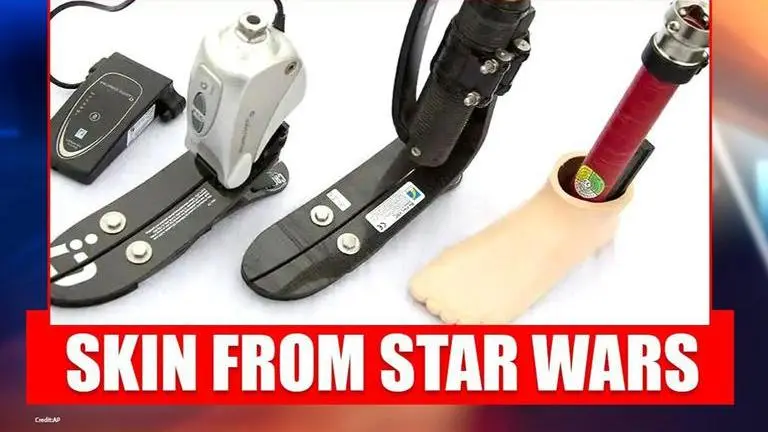Updated 12 August 2020 at 17:00 IST
Scientist creates smart skin that can create sense of touch inspired by 'Star Wars'
Scientists from the National University of Singapore have created an artificial skin made up of 100 small sensors and can recreate the sense of touch.
- Science News
- 2 min read

Scientists from the National University of Singapore have created a revolutionary artificial skin which is a type of smart skin. This skin is made up of 100 small sensors and can help create a sense of touch. This innovative new smart skin was created to make it easier for robots to recognise objects and textures but the creators hope to apply it to prosthetic limbs which will help the users to feel.
The Smart Skin
The smart skin is about 1 square cm in size and has 100 small sensors which will identify objects and textures and then transmit every little sensation to the AI (Artificial Intelligence) brain which will interpret each sensation and develop a sense of touch. As per the international media reports one of the lead researchers, Assistant Professor Benjamin Tee said the concept of the smart skin was inspired by the film 'Star Wars' where a character 'Luke Skywalker' loses his hand and end up with a robotic hand but is somehow able to experience the sense of touch again.
“We’re excited by these results. They show that a neuromorphic system is a promising piece of the puzzle for combining multiple sensors to improve robot perception. It’s a step towards building power-efficient and trustworthy robots that can respond quickly and appropriately in unexpected situations," said Assistant Professor Harold Soh according to the report on National University of Singapore's news site
This artificial skin is called Asynchronous Coded Electronic Skin (ACES). According to the researchers, this smart skin can process information '1,000 times faster than the human sensory nervous system'. In order to test the capabilities of this skin, the researchers used it to read Braille and were able to obtain 92 per cent accuracy while reading and recognizing the Braille letters.
“Scalability is a critical consideration as big pieces of high performing electronic skins are required to cover the relatively large surface areas of robots and prosthetic devices. ACES can be easily paired with any kind of sensor skin layers, for example, those designed to sense temperatures and humidity, to create high-performance ACES-enabled electronic skin with an exceptional sense of touch that can be used for a wide range of purposes,” said Assistant Professor Benjamin Tee as per the report.
Advertisement
Published By : Janvi Manchanda
Published On: 12 August 2020 at 17:00 IST
